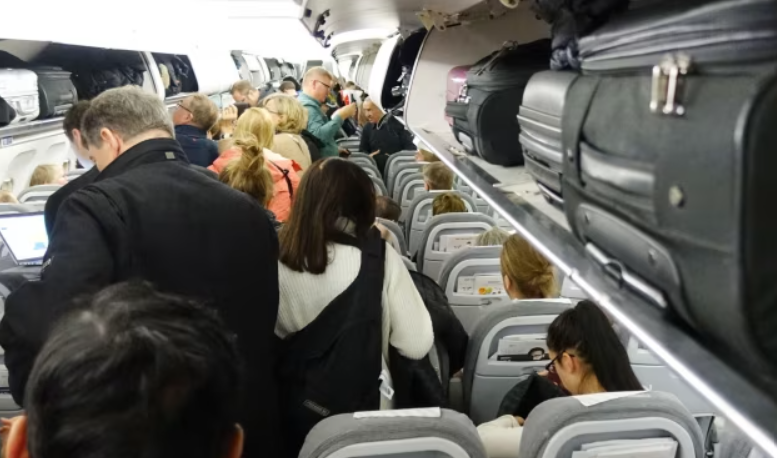United Airlines, a renowned American carrier with a rich aviation history dating back to the early 20th century, seeks to address the boarding process of passengers, which is one of the most problematic facets of air travel.
In the upcoming week, United intends to reintroduce a more efficient boarding method for its economy-class passengers, with the goal of expediting the often cumbersome and contentious boarding procedure by potentially saving up to two minutes.
The concept is straightforward: categorizing passengers into window, middle, aisle, or what they humorously refer to as “Wilma.” When boarding economy passengers, those in window seats will have priority, followed by those occupying middle seats and, finally, those in aisle seats. Groups traveling together under the same reservation will still board as a unit.
Airplane boarding has evolved into a convoluted procedure that not only exasperates travelers but also frequently disrupts airline schedules, resulting in cascading delays throughout the day. For airlines, boarding represents both a logistical puzzle and a psychological challenge as they strive to balance swiftness, fairness, and revenue. Early access to overhead bin space is often seen as a premium benefit for higher-paying customers, creating a scramble to board first.
Airlines have experimented with various solutions, including improved signage and text-message alerts to guide passengers to the gate. The number of boarding groups has multiplied as airlines attempt to reward loyal customers while streamlining the process. The COVID-19 pandemic added another layer of complexity with social distancing requirements.
The ever-shrinking space on flights, as airlines cram in more seats, has exacerbated the boarding challenge. However, the introduction of larger overhead bins, capable of accommodating more carry-on bags, has the potential to alleviate this stress, provided passengers adapt to placing their bags sideways. Despite these changes, gate congestion and bottlenecks on jet bridges remain inevitable.
United Airlines notes that boarding times have increased by up to two minutes since 2019, attributing this trend to the post-pandemic surge in travel. In response, the airline is revisiting the “Wilma” boarding method, which was previously employed before 2017 when they introduced Basic Economy to compete with budget carriers. Back then, they managed just five boarding groups, necessitating the grouping of middle and aisle seats. The recent announcement suggests that United now has the flexibility to introduce a sixth group.
It’s important to note that passengers with disabilities, active-duty military personnel, unaccompanied minors, and others requiring special assistance will continue to enjoy early boarding privileges. The process remains unaltered for first and business class passengers and those with status or credit card perks granting priority boarding.
The third boarding group, including window seat and exit row occupants, will also remain unchanged. Middle-seat passengers will form Group 4, followed by aisle-seat passengers in Group 5. Basic Economy travelers will be assigned a distinct group, being the last to board. Other airlines have likewise been exploring innovations in their boarding procedures. For instance, Southwest Airlines has been conducting trials in Atlanta to reduce the time a plane spends at the gate between flights by five minutes. These modest time savings can accumulate and enable more efficient operations.
The science and academia communities have studied various boarding methods, each presenting distinct theories on the fastest approach. For instance, astrophysicist and associate professor Jason Steffen from the University of Nevada, Las Vegas, proposes alternating row boarding to mitigate congestion, asserting that it outperforms the traditional back-to-front approach. The latter, often attempted by airlines in the past, leads to clumps of passengers that slow the process down. According to Steffen, the “window-middle-aisle” method significantly improves the likelihood of unoccupied spaces, streamlining the boarding experience.
(Source: Alison Sider | WSJ | Associated Press)







